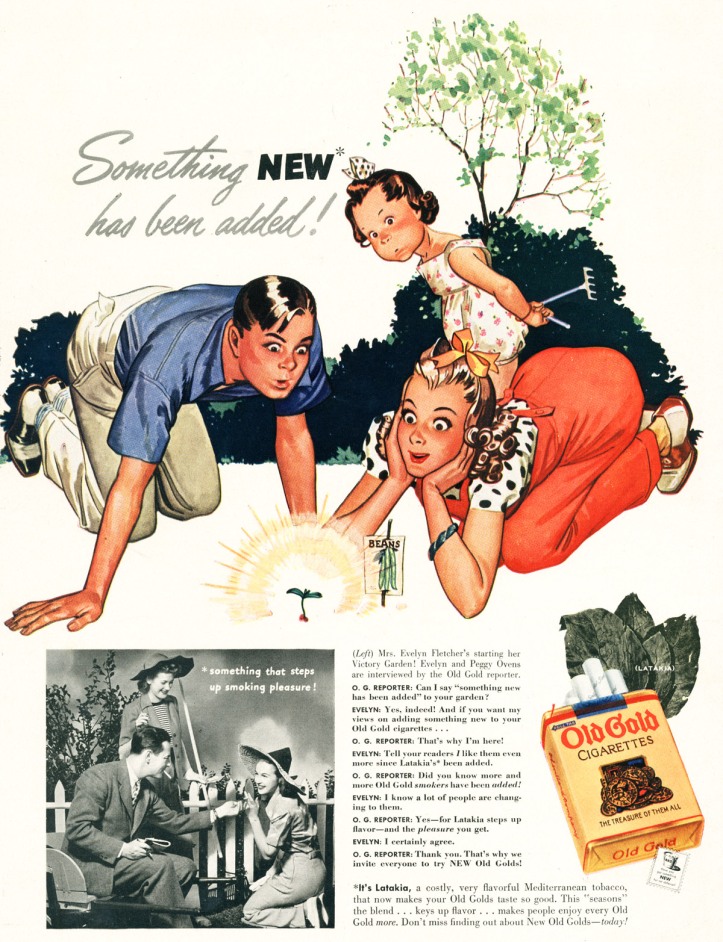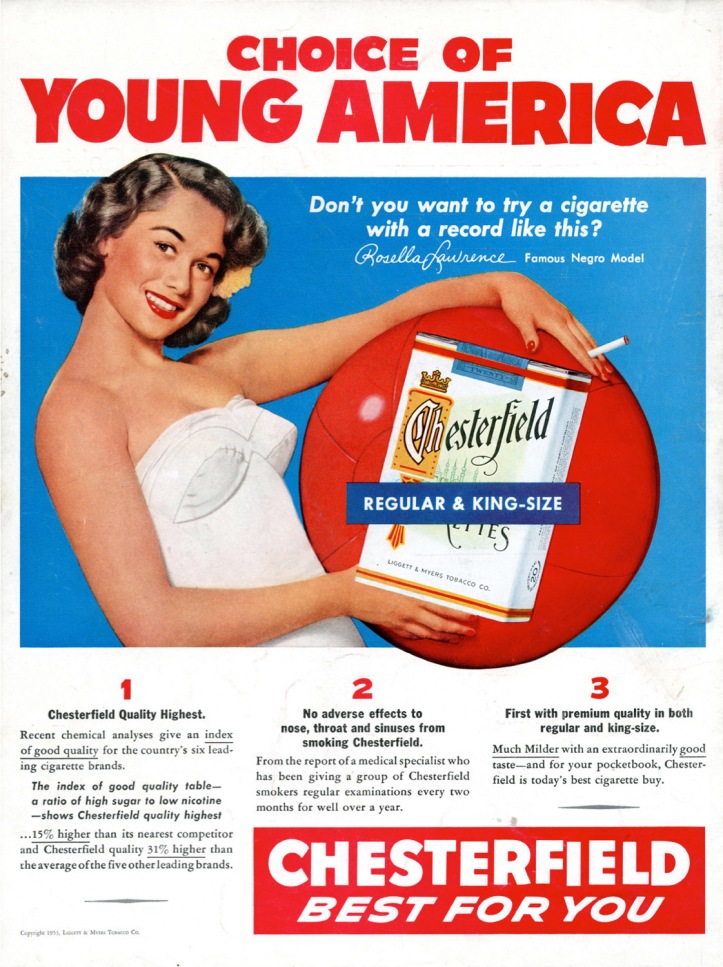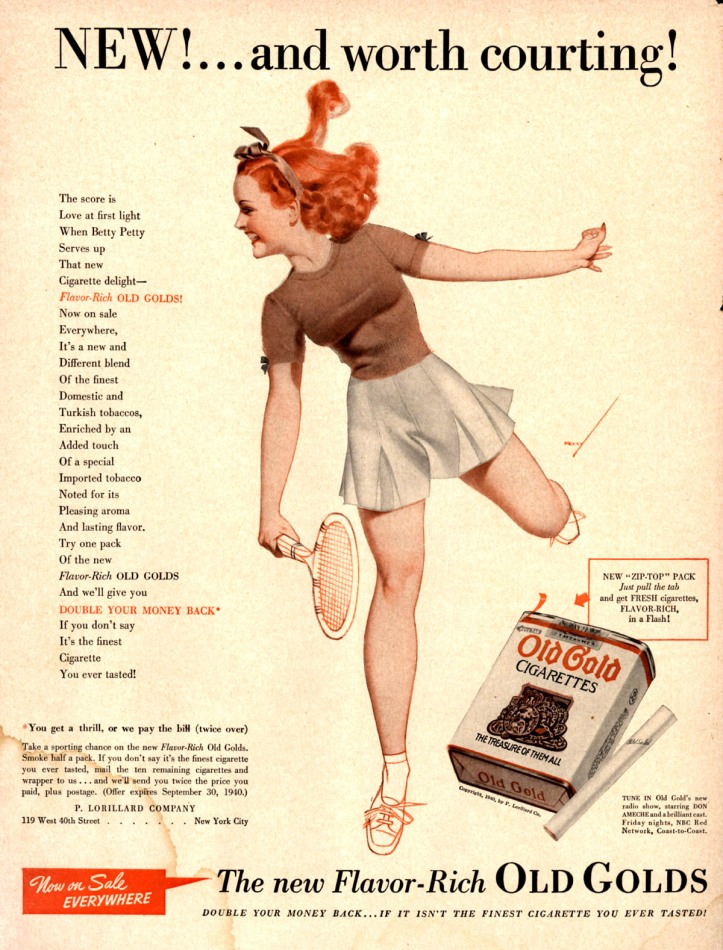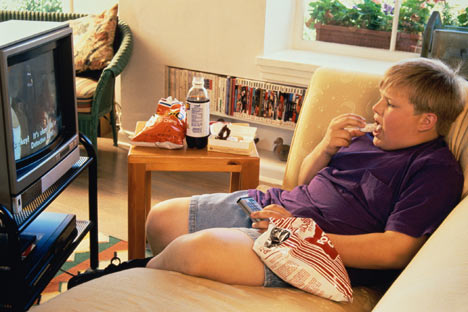Back in the “olden days”, tobacco companies created marketing campaigns like this…

…and this…

…and this…

…in an attempt to make their product seem healthy, family-friendly and to CAPTURE THE YOUTH MARKET.
Because they knew that:
- Kids are more susceptible to marketing than adults
- People who start smoking as kids are likely to be life-long smokers
- Targeting children is the most effective business strategy
“Younger adults are the only sources of replacement smokers” – RJ Reynolds, 1984
“Today’s teenager is tomorrow’s potential regular customer, and the overwhelming majority of smokers first begin to smoke while still in their teens… The smoking patterns of teenagers are particularly important to Philip Morris.” – Philip Morris 1981
“The ability to attract new smokers and develop them into a young adult franchise is key to brand development.” – 1999 Philip Morris report
“They got lips? We want them.” – Reply of an RJ Reynolds representative when asked the age of the kids they were targeting
But of course, that happened way back in the olden days, before we got smart and told tobacco companies to stop giving our kids cancer. Nowadays, we would never let an industry knowingly make profits by making our kids sick….would we?

According to this meta-analysis of all of the available scientific research, we know for a fact that unhealthy food advertising does increase unhealthy food intake in children…but not in adults.
And IMHO, that’s because children are children and lack the awareness & experience to resist the siren call of Madison Ave mind control.
According to lead researcher Dr Emma Boyland : “Through our analysis of these published studies I have shown that food advertising doesn’t just affect brand preference – it drives consumption. Given that almost all children in Westernised societies are exposed to large amounts of unhealthy food advertising on a daily basis this is a real concern.
“Small, but cumulative increases in energy intake have resulted in the current global childhood obesity epidemic and food marketing plays a critical role in this. We have also shown that the effects are not confined to TV advertising; online marketing by food and beverage brands is now well established and has a similar impact.
“On the basis of these findings, recommendations for enacting environmental strategies and policy options to reduce children’s exposure to food advertising are evidence-based and warranted.”
And just in case anyone is confused about the health effects of childhood obesity, here’s what the CDC has to say:
Health Effects of Childhood Obesity
Childhood obesity has both immediate and long-term effects on health and well-being.
Immediate health effects:
- Obese youth are more likely to have risk factors for cardiovascular disease, such as high cholesterol or high blood pressure. In a population-based sample of 5- to 17-year-olds, 70% of obese youth had at least one risk factor for cardiovascular disease.
- Obese adolescents are more likely to have prediabetes, a condition in which blood glucose levels indicate a high risk for development of diabetes.
- Children and adolescents who are obese are at greater risk for bone and joint problems, sleep apnea, and social and psychological problems such as stigmatization and poor self-esteem.
Long-term health effects:
- Children and adolescents who are obese are likely to be obese as adults and are therefore more at risk for adult health problems such as heart disease, type 2 diabetes, stroke, several types of cancer, and osteoarthritis.6 One study showed that children who became obese as early as age 2 were more likely to be obese as adults.
- Overweight and obesity are associated with increased risk for many types of cancer, including cancer of the breast, colon, endometrium, esophagus, kidney, pancreas, gall bladder, thyroid, ovary, cervix, and prostate, as well as multiple myeloma and Hodgkin’s lymphoma.
What does this mean to you?
- Advertisers used to market tobacco to children
- When enough parents were convinced that tobacco was bad for their kids, they demanded (via gov’t) that advertising tobacco to kids be stopped immediately.
- Today, advertisers market processed junk food to children
- Some of us (me, you, World Health Organization, CDC, American Psychological Association, etc) are convinced that (1) processed junk food is bad for our kids and (2) our kids are susceptible to junk food advertising.
Unfortunately, not enough parents are convinced…and until they are, their kids are at a higher risk of obesity, heart disease, type 2 diabetes, stroke, several types of cancer, osteoarthritis, and many types of cancer including cancer of the breast, colon, endometrium, esophagus, kidney, pancreas, gall bladder, thyroid, ovary, cervix, and prostate, as well as multiple myeloma and Hodgkin’s lymphoma.
What can we do?
Thanks to the wonders of social media & the interweb, all you need to do is share this article on Facebook and Twitter.
All we need is one @KimKardashian retweet and those corporate childhood obesity peddlers are screwed 🙂
Reference
- Stanford University – Tobacco Marketing targeting kids
- American Journal of Clinical Nutrition
- World Health Organization
- American Psychological Association
- Childhood Obesity Rates Ballooning Around the World
Like this article???
If you like this article, don’t forget to subscribe to @healthhabits. When you subscribe, my friends at MailChimp will make sure to send you an email every time I post something new here at the blog.
As well, you also get access to the series of Supplement Reports that I am publishing this year.